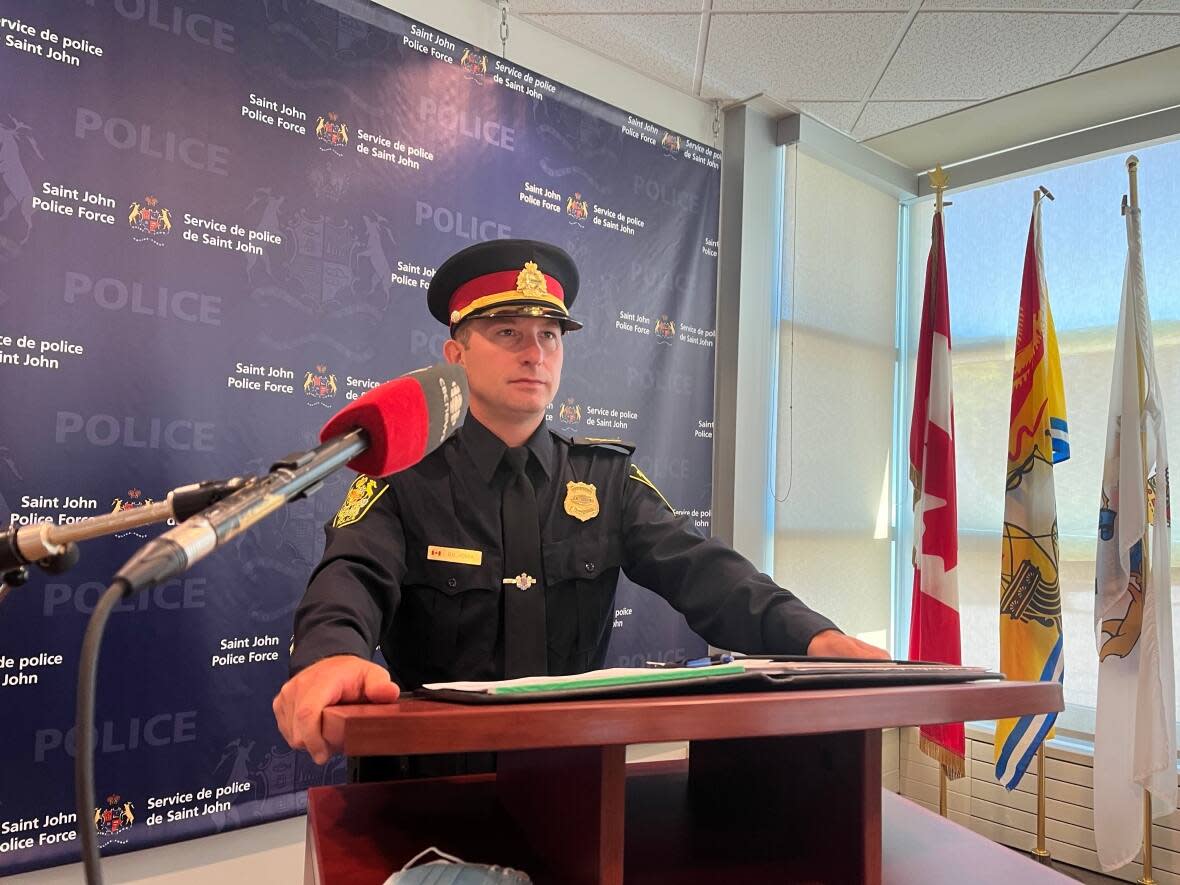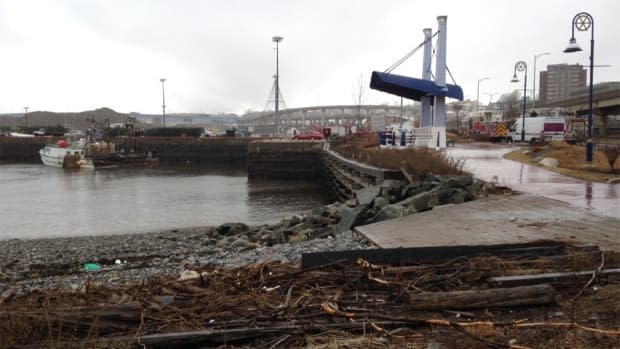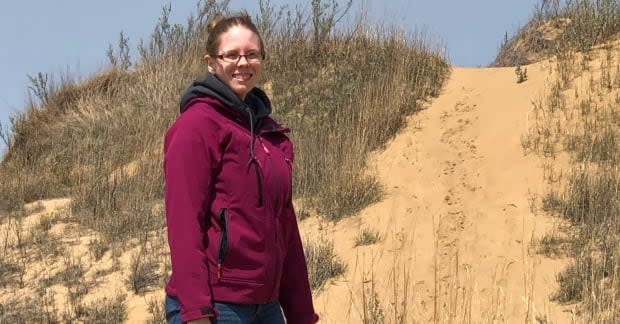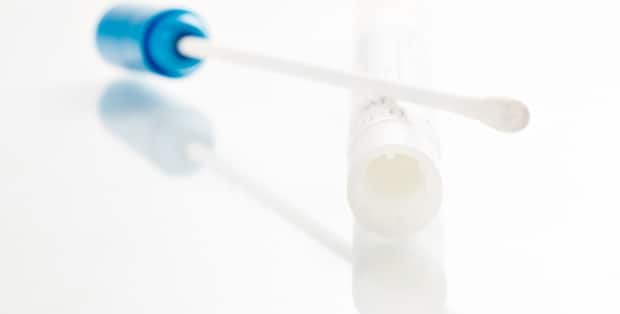Saint John's Jane Doe: Anatomy of an investigation into human remains

Saint John police are turning to DNA to help identify human remains found on the Saint John waterfront last month.
Samples have been sent to a national database for comparison, said Staff Sgt. Sean Rocca of the Saint John Police Force.
Rocca said the National Centre for Missing Persons and Unidentified Remains will create a DNA profile based on the sample sent by Saint John investigators and compare it against samples in the national database.
He said results could take weeks or months.
The remains of a female were found at Long Wharf in Saint John on Sept. 13.
Rocca said police investigators consulted a forensic anthropologist and a forensic pathologist early in the investigation. That's how they came up with a preliminary description of the woman that was released last month.

She is described as being between 17 and 30 years old and five feet four to five feet seven inches tall.
"In the case of race or ethnicity, they don't know," said Rocca. "And they don't know hair colour either."
He said police haven't received a post-mortem report, nor do they know the cause or manner of death.
When unidentified remains are found, police often consult with forensic anthropologists to help create a profile. They help determine things like biological sex, ancestry, height and age, explained Megan Bower, an assistant professor at St. Francis Xavier University who teaches forensic anthropology.
Bower said each case is different and their approach depends on the condition of the remains. In many cases, police are faced with only a few bones — or just a single bone.
Or, they could have an intact skeleton with little soft tissue remaining. Or, as was the case in Saint John, they can have a body that's been in the water for a long time.
"Depending on the bone that you have, it will dictate the different methods that can be used," said Bower.
"In a perfect world, if you had a perfect skeleton, I mean, you can get a lot of information. You really can. It's quite astonishing really."

But remains are often just a bone or two — and some bones are more significant than others, from an investigative point of view. One of the most valuable is a portion of the pelvis called the os coxae or the innominate.
"It's essentially one of your hip bones, and there's a piece on it called the pubic symphysis and … it is absolutely fantastic for trying to understand things like age and sex, for example."
She said the technique has been around for about a hundred years and has been refined and improved over the years, making it quite a reliable tool.
In younger people, the pubic symphysis tends to be more furrowed and have ridges, whereas in older people it tends to be more flat.
In terms of identification value, right behind the pubic symphysis is the skull and then femur. But the value really depends on what characteristics you're trying to determine, said Bower.
Easier to determine child's age
When it comes to age, Bower said it's easier to pinpoint the age of a child than an adult because of "a predictable set of changes" that occur during childhood.
For example, experts know at what point the femur, or thigh bone, begins to fuse or when certain teeth appear. That's why they can predict a child's age much more precisely.
As a result, anthropologists typically use fairly wide age ranges for adults. She said they could judge an age to be between 20 and 34, 35 to around 50, and over 50, although the categories are not strictly established.
Complications of water
Bower said bodies that have been in the water for a long time present unique problems. Certain environmental conditions, including strong currents and rocks, can cause damage to the body as it's moved around. Also, fish, birds and other critters feed on the remains.
Bower said a body will initially sink in water. As decomposition occurs, the bacteria that live on in the body after it's submerged continue "doing their thing," and the body starts to bloat.
"As you get bloating … you'll also get the creation of something called adipocere," a greyish waxy substance formed by the decomposition of soft tissue exposed to moisture.
Bloating causes the body to float to the surface, where it's more likely to get moved around by currents and tides.
Bower said it's often difficult to accurately pinpoint how long a body has been in the water because there are so many variables at play, including the state of the remains when they went into the water, the kind of clothing or covering that might help protect the body from damage or predation and the temperature of the water.
"It's pretty context-dependent," she said.
Rocca said there was "no firm timeline" for how long the body found last month was in the water, but said the case is believed to be fairly recent.
There are "many different variables in terms of what can deteriorate the human body," he said, including the temperature of the water.
Inland waters, for example, are significantly warmer in the summer than the Bay of Fundy, and the body was discovered where the two meet.

And because police don't know how far the body may have travelled, Rocca said Saint John investigators are also checking with police in coastal jurisdictions in the United States.
Rocca said there are no recent reports of missing females in the Saint John area. Investigators have reached out to several neighbouring jurisdictions, including Fredericton, where there was a report of a woman who went missing last December, although her age and height do not match the description of the body found in Saint John.
When remains are discovered, identifying them is "more or less a process of elimination," explained Rocca.
The first step is visual identification. That's when someone who knows the person can make an identification just by looking at the body. For example is if someone is carrying identification, police could approach a close friend or family member to confirm the person's identify.
If there is no identification, but there is an outstanding missing person's case, police could ask a close contact for visual confirmation.
That was not possible in the case of the woman's body found in the harbour, because there aren't any missing persons cases that would match what the police know about the remains so far.
Similarly, dental and medical records can only be used to verify a match if police think they already know the identity of the body.
Another method is through fingerprints, but it's often not a reliable way of identifying someone since the database would only include people whose fingerprints have been collected and retained in the database. For the most part, that would usually only include those with a criminal record.
DNA often the best tool
That leaves DNA, which is often the best tool available to investigators, said Rocca.
But again, it only works if the person's DNA has been entered into the DNA databank for missing persons.
Rocca said investigators have taken samples from the remains from the harbour and sent them for a comparison — the results of which can take weeks or months.
The National Centre for Missing Persons and Unidentified Remains is run by the RCMP. The program assists law enforcement, medical examiners and coroners with missing persons and investigations into unidentified remains across the country.
The program maintains three non-criminal indices for DNA samples — missing persons, relatives of missing persons and human remains.
The program can also compare a missing person's DNA to another database that includes DNA from convicted offenders, crime scenes, victims of crime and voluntary donors.
Closeness counts when it comes to DNA
But as Rocca pointed out, a match can only be made if the missing person's DNA had been previously submitted to the program.
If a missing person's DNA isn't available to be submitted, samples from relatives can be used.
The closer the relationship, the more similar the DNA. Each person receives half their DNA from their mother and half from their father, so the most useful samples are from the missing person's biological mother, father, children, brothers or sisters.
"When submitting a DNA sample from the child of a missing person, it's also helpful to submit DNA from the child's other biological parent, in order to determine which part of the child's DNA came from the missing parent," states the program's website.
"DNA profiles are continually being added to the data bank and searches are conducted regularly. A match or association could happen at any time: immediately, long term or not at all.
Rocca said police are waiting for the results of the DNA comparison before deciding the next step in the investigation. If there is no DNA match, investigators will go back to the forensic anthropologist and figure out what other techniques can be used to determine the woman's identity.
Some techniques deemed too invasive
Bower said there are more invasive techniques that can be employed, but forensic anthropologists hesitate to use them unless absolutely necessary. She said those in the profession are very sensitive to various cultural beliefs that exist when it comes to human remains.
Facial reconstruction, for example, uses the skull to create a simulation of how a person likely looked when alive.
Forensic sculptors work with forensic anthropologists and established characteristics about males and females and different ancestral groups to recreate a person's face using clay.
But the process has to start with a clean skull. Bower said that's why certain investigative tools are not employed unless necessary.
Rocca said the remains found in the harbour will be kept in the morgue by the coroner until the next investigative steps are determined.
The RCMP and officials with the DNA databank were asked for comment, but none was provided by publication time.


